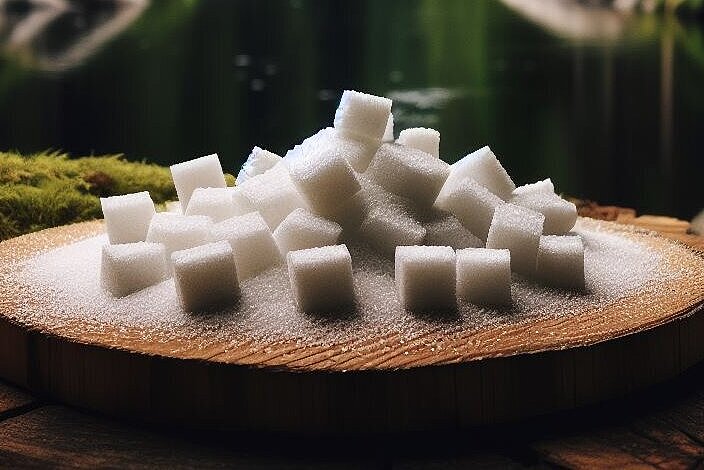Coconut blossom sugar

What is coconut blossom sugar?
Coconut blossom sugar is obtained from the nectar of the blossoms of the coconut palm tree. The nectar is collected, boiled down and processed into a sugar that has a brown color and a caramel-like taste. Due to its natural production process, coconut blossom sugar contains minerals such as iron, zinc, calcium and potassium as well as some antioxidants.
Benefits of coconut blossom sugar for dogs
Low glycemic index
Coconut blossom sugar has a lower glycemic index than conventional sugar, which means that it causes blood sugar levels to rise more slowly. This could theoretically be beneficial for dogs with diabetes, but sugar should generally be used with caution in a dog's diet.
Natural sweetness
As a more natural sweetener compared to processed sugar, coconut blossom sugar could be considered as an occasional treat, especially if dog owners are looking for alternatives to artificial sweeteners.
Risks and disadvantages
Sugar is still sugar
Despite its lower glycemic index and natural origin, coconut blossom sugar is still sugar and can lead to the same problems as conventional sugar if consumed in excess, including obesity, dental problems and possibly even diabetes.
Potential toxicity
Some dogs may be sensitive to certain sugars and there are insufficient studies on the specific effects of coconut blossom sugar on dogs. As with any new food additive, caution is advised and it should only be offered in small amounts initially.
Cost and availability
Coconut blossom sugar tends to be more expensive than conventional sugar and may not be as readily available, making it a less practical option for regular treats.
Recommendations for using coconut blossom sugar with dogs
- Moderation is key: If you decide to offer your dog coconut blossom sugar, do so in very small amounts and not as a regular part of their diet.
- Observation: Watch for signs of gastrointestinal discomfort or allergic reactions after your dog has consumed coconut blossom sugar.
Sweeten with caution
Coconut blossom sugar may be an interesting alternative to conventional sweeteners, but it should be used with great caution in a dog's diet. Sugar, in any form, offers more risks than benefits for dogs and should therefore only be given sporadically and in minimal amounts at best. Your dog's health and well-being always comes first, and the best diet for them is one that is based on their specific needs and focuses on high-quality, nutrient-rich foods that are beneficial to their health.
If you notice any signs of hypersensitivity or poisoning in your dog, you should see your vet immediately. We are not a substitute for a vet, but we try to be as accurate as possible. Every dog reacts differently and we recommend you get a second opinion or consult your vet if in doubt.
Stay healthy and take good care of your four-legged friend!😊
Similar to Coconut blossom sugar
Sugar is generally not dangerous for dogs. In small amounts, it can even have positive effects, for example: It improves mood and well-beingIt helps with regeneration after physical exertionIt...
Palm sugar is obtained by boiling down the sap from palm flowers, mainly from coconut palms and various types of sugar palms. The resulting sugar can be in the form of hard blocks, granules or...
What is maple syrup? Maple syrup is a natural sweetener obtained from the sap of the maple tree. This sap is collected and then concentrated by heating, creating the characteristic golden syrup. It...
Honey is a natural product made by bees from the nectar of flowers or the honeydew of plants. The bees collect the nectar or honeydew, carry it in their honey stomachs to the beehive and pass it on...



